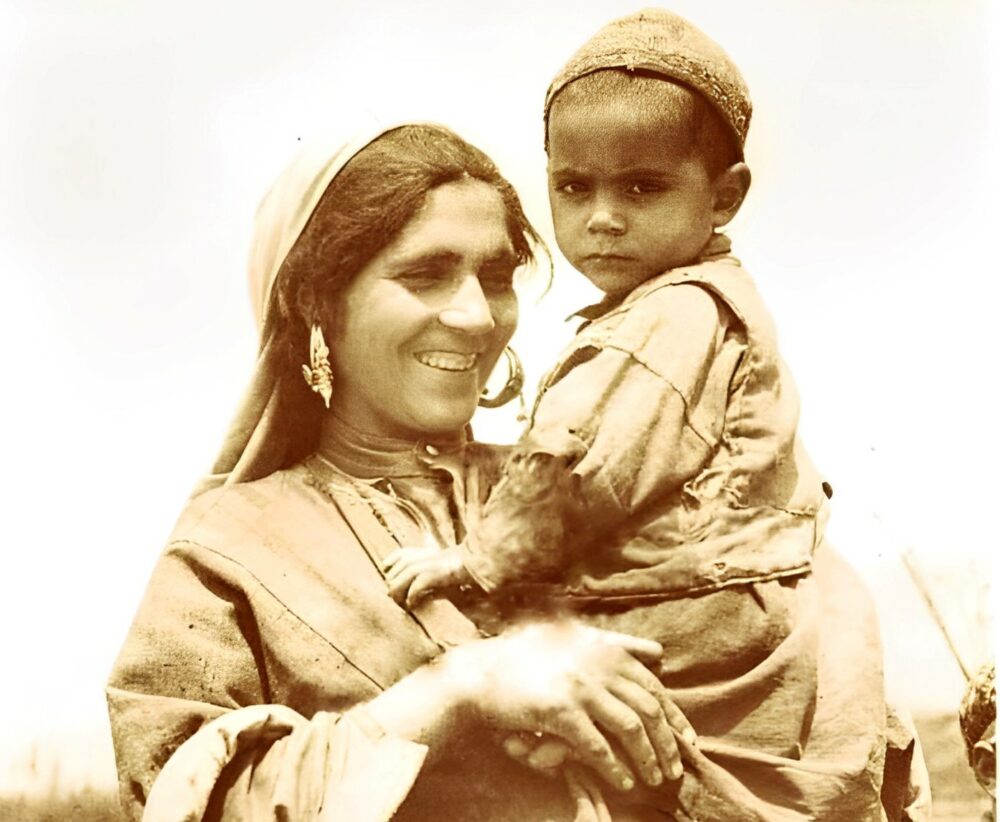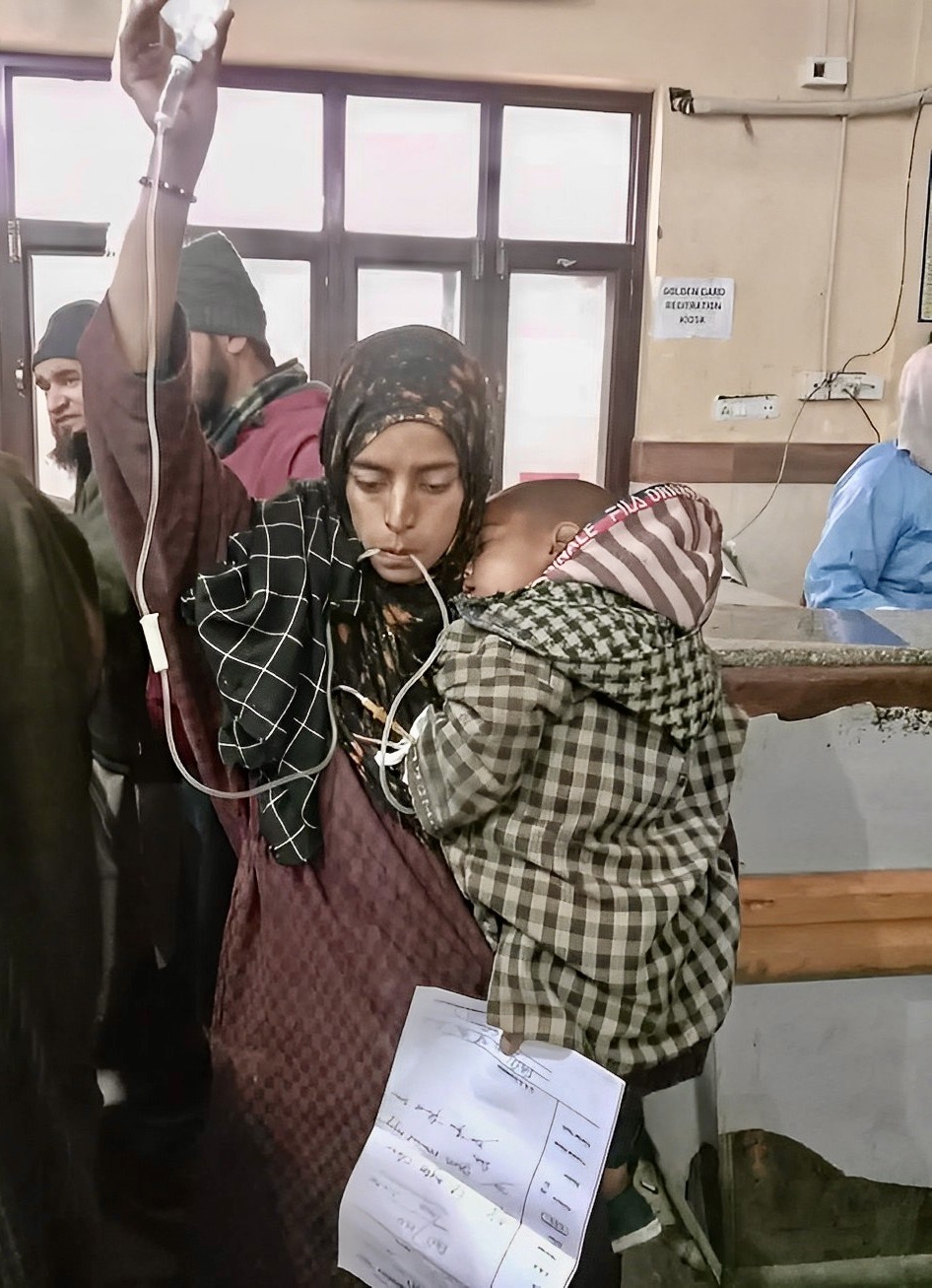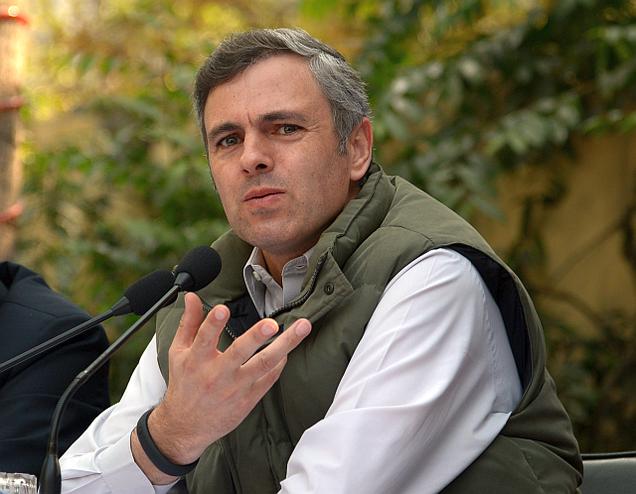by Ifra Reshi
SRINAGAR: Modern science may take its time to establish the importance of herbal baths for postpartum women but Kashmir has used the bath for centuries is helping mothers to heal and bounce back to life. Rooted in tradition, the bath, after 40 days of the birth is a special occasion that honours a mother for giving birth to a life.

“A mother carries her baby for nine months during which she goes through a lot of changes mentally and physically,” Raja Begum, herself a mother, said. “The bath is part of a set of practices that have passed on across generations and it helps in rejuvenation and healing.”
In Kashmiri, a postpartum lady is called Loase or Loaseh. Exactly 40 days after childbirth – normal or C-section, a mother is supposed to take a bath with Loaseh Aab (aab means water). It is a special water that is prepared by boiling Loaseh Gasseh in water for an hour or two, usually in a copper pot.
Tradition treats a mother like a patient for 40 days. She is served specially and given a lot of nutritious food. Apart from Koshur Kokur (courtyard chicken), they used to be fed with a lot of Haund (dandelion leaves), Lisseh – in certain cases, Vopul Haakh, which are vegetations having medicinal properties.
Normal practice is that the husband or her in-law brings, Peaw, a special visit to her, which brings in a lot of food items, besides clothing, warmers, beddings and – in certain cases, gold. This is seen as an occasion of celebration. Traditionally, the mother stays with her parents after the delivery. It is almost mandatory in the case of first birth unless the situation dictates otherwise.
Forty days later, the family gets ready for the bath and it changes the status of the mother. Now she can move around, go home, and get into the routine.
Almost in every society, such cultural rituals exist but in the case of Kashmir, the tradition is mixed with serious curative and healing efforts of the mother.
“It was my first experience of being honoured as a new mother,” Maroofa Majeed, a first-time mom, said. “The process was amazingly restorative and for the second time in my adulthood, I felt important and honoured – the first time was when I got married and the second time when I gave birth to the child.”
“I remember my mother being very cautious and excited about the day preparing the bath, steeping the herbs mixed with water in a big traditional copper pot and left for boiling on a traditional mud burner outside the house and then pouring into a big tub,” Nasreena Trumboo, another first-time mother, said. “She took a fistful of herbs and scrubbed and massaged my whole body for 20 minutes.”
It is just not a bath, it is literally a procedure that induces healing and rejuvenates the body.

“The herbs used in the postpartum bath are part of Kashmiri folk medicines and not the Unani Tibb. It relaxes internal organs, balances the muscle tune, detoxifies and gives restoration to the body of postpartum women,” Dr Ayoub Sofi, Incharge Medical Officer Ayurveda, Yoga ad Naturopathy, Unani, Siddha and Homeopathy (AYUSH) unit SMHS said. “In fact, the tourists and foreigners who come from far distances also take this medicinal herbal bath in Kashmir for relaxation and rejuvenation.”
The Loaseh Gasseh is a huge mixture of herbs, shrubs, leaves, wild fruits and roots together. These are sourced from different areas. Some of the items are cultivated in Doda, Gurez and Kishtwar areas. Many others are sourced from mainland India.
Practitioners believe a function of herbal medicines in bathing is to increase the involution of the uterus.
Sofi, however, regrets that the people bring these herbs from Bohru shops, people selling the herbs or herbalists, and take a postpartum bath at home without having proper awareness regarding the usage and benefits of all herbs. The pouch of the Loaseh Gasseh must contain a balanced mix of all the items that have been used traditionally. It includes various antiseptics and astringents that help heal and rejuvenate.
Normally, the Loaseh Gasseh has the following items:
Calendula, (Marigold, Jaffer): Anti-inflammatory properties that soothe and heal tissues.
Comfrey, (Black Wort): Heals bruises and sprains.
Sage leaves (Tej patta, Bargi Tej): Anti-inflammatory properties and also relieves muscles.
Liquorice, (Shangar): Repairs and reduces the number of bacteria on the skin.
Curuma, (laedri Gandri): An antiseptic having antioxidant properties that soothe joints.
Taraxacum, (Dandelions, hand): It has detoxifying properties, reduces scars and heals skin.
Adiantum Capillus-Veneris, (Persioshan, Hansraj): Antifungal properties, supports immunity to fight infections.
Kasni, (Kasun Posh, Chircory flower): Healing properties for skin and eliminate toxins from the body.
Banafsaha, (Sweet violet): Relieves skin irritations.
Unab, (Bray Mewi, Jujube fruit, Chinese date): Reverses the effects of ageing, has antioxidant properties, and fights and prevents cell damage.
Sapistan, (Lasora): Helps in relieving and relaxing pain.
In certain cases, even sea salt is also added to the water for its therapeutic uses.

Tradition suggests that the water needs to be boiled in a copper utensil for one to two hours and used when it is lukewarm. The boiled herbs are also used to scrub the body.
The herb collection costs not even a fraction of what eventually goes into its preparation. Normally, after the bath, women are supposed to take rest in a warm bed and have good meals. Since the water they use for bathing is aromatic, these women feel scented for many days.
In certain cases, like that of Kashmiri Pandits, the bath would be performed after 11 days only.















Nicely articulated.
But in addition to mentioned herbs; Prunulla vulgaris, Origanum vulgare, Nepata spps are most important ingredient in (Loasee ghaase).
Furthermore, the ingredients in that traditional herbal bath mixture can vary depending upon on location and availability of herbs from the primary collector.